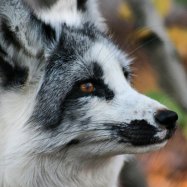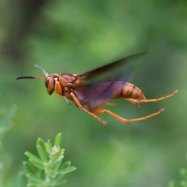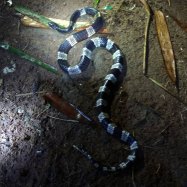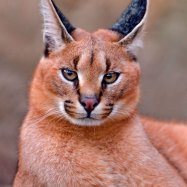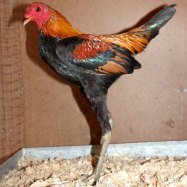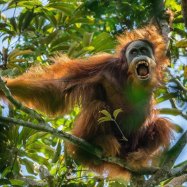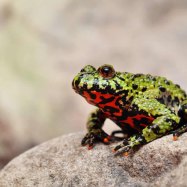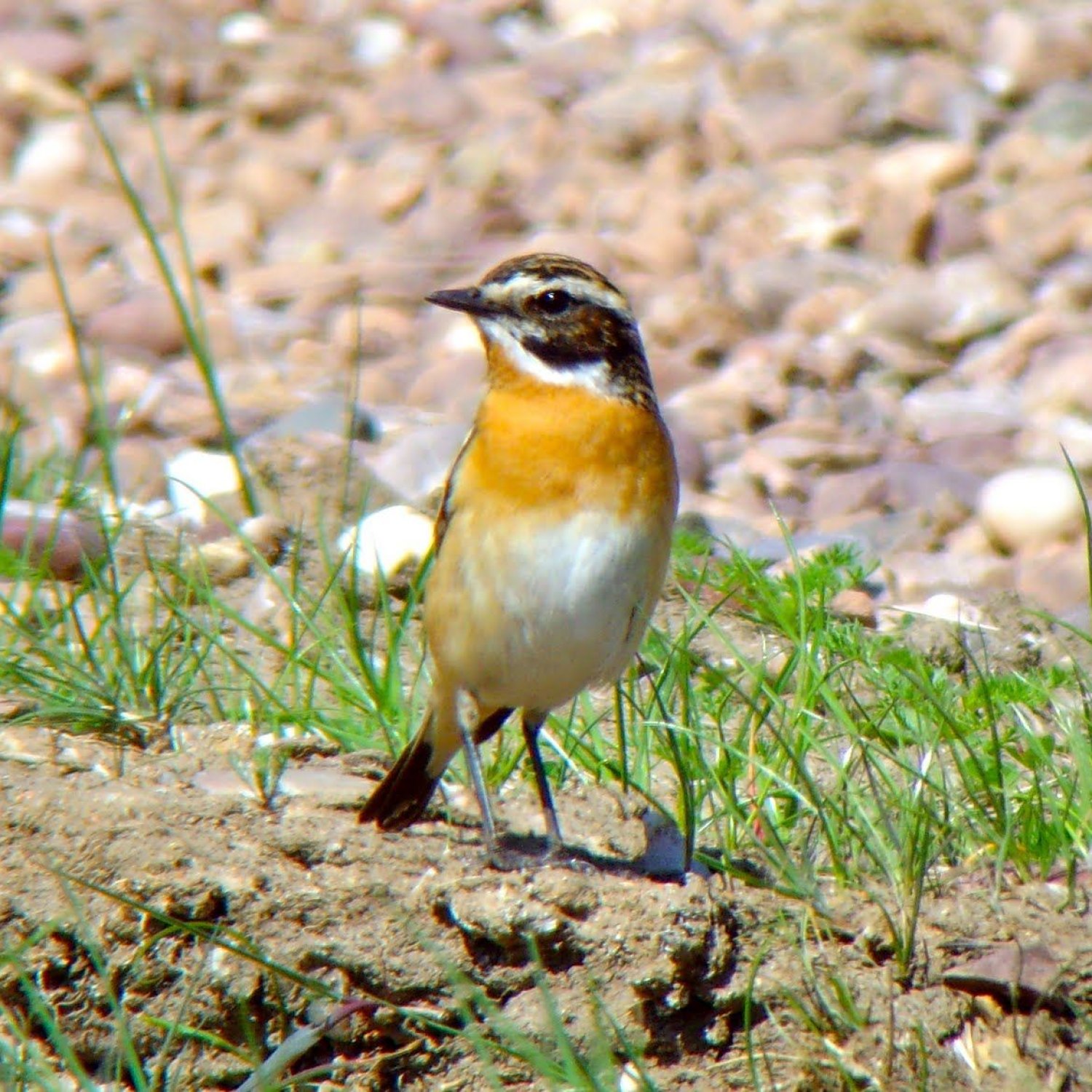
Whinchat
12-13.5 cm
The Whinchat is a small, compact bird found in the countryside areas with scattered bushes. Belonging to the Muscicapidae family, this bird measures 12-13.5 cm in length. Its distinctive features make it a favorite among bird watchers. #Whinchat #birdwatching #countryside #Muscicapidae
Animal Details Summary:
Common Name: Whinchat
Kingdom: Animalia
Habitat: Grasslands, heathlands, and open scrublands
The Whinchat: A Hidden Gem of the Countryside
As we explore the rich and diverse world of birds, we often come across the usual suspects - the majestic eagles, the colorful parrots, and the impressive ostriches. However, hidden beneath the glimmering feathers of these popular species lies a lesser-known but equally fascinating bird - the Whinchat.With its orange-brown upperparts, pinkish breast, and distinct pale supercilium, the Whinchat may not immediately catch our eye. But its compact body shape and its numerous impressive features make it a truly remarkable creature Whinchat. Let's delve deeper into the world of the Whinchat and discover the hidden gem of the countryside.
The Basics: Scientific Name and Classification
The Whinchat's scientific name is Saxicola rubetra. "Saxicola" is derived from the Latin word "saxicola," which means "dweller among rocks," depicting the bird's tendency to inhabit rocky areas. "Rubetra" is a Latin word meaning "bramble bush," which is a preferred nesting site for this species.The Whinchat belongs to the Kingdom Animalia, Phylum Chordata, Class Aves, and Order Passeriformes. Its family is Muscicapidae, which also includes other birds like the European Robin and the Pied Flycatcher. These birds are known for their insect-eating habits and their melodious songs.
Habitat and Distribution
The Whinchat is a migratory bird, which means it changes its location depending on the season. During the breeding season, from April to September, it can be found in Europe, Asia, and Africa White Crowned Sparrow. Its main breeding grounds are in the United Kingdom, specifically in countryside areas with scattered bushes.As the weather gets colder, the Whinchat migrates to sub-Saharan Africa to spend the winter months. The bird travels through the Middle East, crossing the Sahara Desert, and reaches its destinations in West Africa. Their main wintering habitats include grasslands, heathlands, and open scrublands.
Feeding Habits
The Whinchat is an insectivore, which means it mainly feeds on insects. It uses its sharp bill to catch insects like flies, beetles, and caterpillars. The bird can be often seen perched on a branch, scanning the area for its next meal. It then swoops down to catch the insects in mid-air.One interesting fact about Whinchats is that they often hunt for prey on the ground. They have been observed jumping and hopping in short bursts in their pursuit of insects. This behavior is particularly fascinating as most insectivorous birds primarily hunt in the air or from perches.
Appearance and Physical Features
The Whinchat may not be the most colorful bird, but it has a unique and charming appearance. Its upperparts are mainly orange-brown, with white streaks that run along the back and wings. The bird's breast and sides are pinkish, with a distinct pale supercilium, which is a line of feathers above its eye.One of the most unique physical features of the Whinchat is its compact body shape. It measures only 12 to 13.5 cm in length, making it one of the smaller members of the Muscicapidae family. Its small size also makes it a difficult bird to spot, as it can easily blend into its surroundings.
Behavior and Adaptability
The Whinchat is a highly adaptable bird, with the ability to thrive in various habitats. During the breeding season, it can be found in open areas with scattered bushes, but in the winter, it makes its home in the grasslands and open scrublands of Africa. This adaptability is crucial to its survival as it allows the bird to find suitable food and shelter all year round.Another fascinating behavior of the Whinchat is its singing. Males sing to attract females and defend their territory, producing a sweet and melodious tune. Their calls are usually delivered from a perch, and their songs are more complex and varied compared to other birds of their size.
Conservation Status
The Whinchat is currently listed as a species of "least concern" on the International Union for Conservation of Nature (IUCN) Red List. However, there has been a decline in its population due to habitat loss and degradation. This decline is particularly prominent in the United Kingdom, where the Whinchat's preferred habitat of scattered bushes is disappearing due to agricultural intensification.Various conservation efforts are being taken to protect the Whinchat and its habitat. These include creating and maintaining suitable habitats, setting up nest boxes, and raising awareness about the bird's importance. Additionally, the Whinchat is also protected under the European Union's Birds Directive, which prohibits its capture, killing, and trading.
Final Thoughts
The Whinchat may not be as popular as the golden eagles or as colorful as the macaws, but it is a remarkable bird in its own right. Its compact size, unique appearance, and adaptive behavior make it a true hidden gem of the countryside. However, as its population faces threats, it is our responsibility to appreciate and protect this magnificent bird.If you ever come across a Whinchat during your countryside adventures, take a few moments to observe and appreciate its beauty. And remember, the Whinchat may not have the grandeur of larger birds, but its charm and uniqueness make it an equally special creature in the world of birds.

Whinchat
Animal Details Whinchat - Scientific Name: Saxicola rubetra
- Category: Animals W
- Scientific Name: Saxicola rubetra
- Common Name: Whinchat
- Kingdom: Animalia
- Phylum: Chordata
- Class: Aves
- Order: Passeriformes
- Family: Muscicapidae
- Habitat: Grasslands, heathlands, and open scrublands
- Feeding Method: Insects
- Geographical Distribution: Europe, Asia, and Africa
- Country of Origin: United Kingdom
- Location: Countryside areas with scattered bushes
- Animal Coloration: Orange-brown upperparts; pinkish breast with a distinct pale supercilium
- Body Shape: Small, compact
- Length: 12-13.5 cm
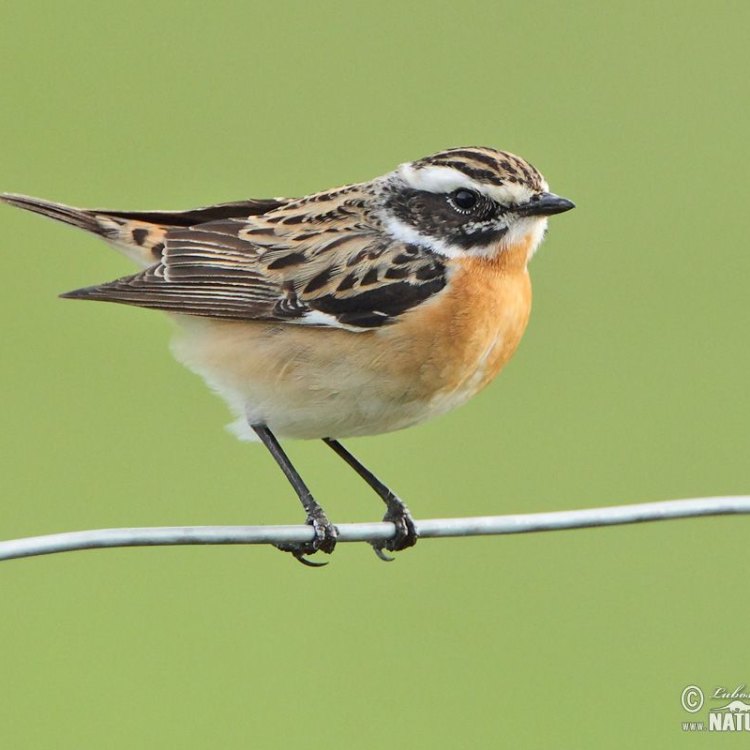
Whinchat
- Adult Size: Small
- Average Lifespan: 2-3 years
- Reproduction: Monogamous
- Reproductive Behavior: The male performs a display flight and territorial singing
- Sound or Call: Sharp and simple song
- Migration Pattern: Long-distance migrant
- Social Groups: Solitary, but can be found in loose groups during migration
- Behavior: Active and agile
- Threats: Habitat loss, intensive agriculture, climate change
- Conservation Status: Least Concern
- Impact on Ecosystem: Seed dispersal
- Human Use: Birdwatching, conservation efforts
- Distinctive Features: White eye stripe, distinct supercilium
- Interesting Facts: The name 'whinchat' comes from the Old English words 'hwi-næppa' which means 'white nape'
- Predator: Birds of prey, snakes, and mammals
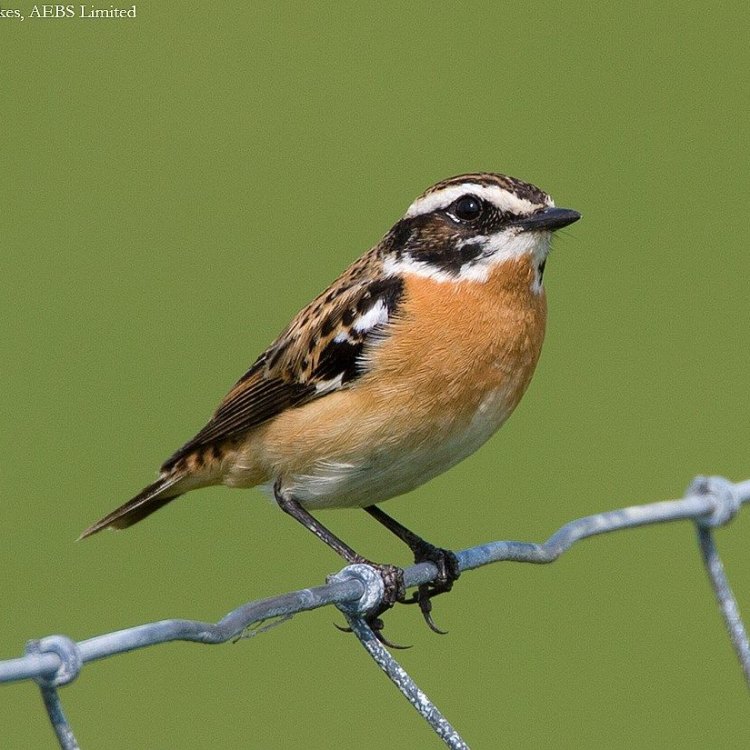
Saxicola rubetra
The Charming Whinchat: A Small but Mighty Migrant Bird
The world is full of amazing creatures, from mighty elephants to tiny insects. Among these incredible creatures is the charming and elusive whinchat. This small-sized bird may not be as well-known as other avian species, but it has many unique features that make it stand out from the rest. In this article, we will explore the fascinating world of the whinchat, from its behavior and reproductive habits to its impact on the ecosystem and its interaction with humans PeaceOfAnimals.Com.Size and Lifespan:
The whinchat, scientifically known as Saxicola rubetra, belongs to the family of small passerine birds, which also includes species like robins and wrens. This bird is relatively small, with an average length of around 5.5 inches and a weight of only 0.5 ounces. Despite its small size, the whinchat is known for its active and agile behavior.
In the wild, the average lifespan of a whinchat is 2-3 years. However, some individuals may live up to 5 years in good conditions. The short lifespan of this bird is mainly due to its long-distance migration and the threats it faces in the wild, which we will discuss later in this article.
Reproduction:
Whinchats are monogamous birds, meaning they mate with only one partner for the breeding season White Faced Capuchin. Their reproductive behavior is fascinating and involves the male performing a display flight and territorial singing to attract a mate. These charming birds also build their nests on the ground, usually in dense vegetation, to protect their eggs and young ones from predators.
Once the female has laid her eggs, the pair takes turns incubating them for about two weeks until they hatch. The parents then work together to feed and care for their young until they are ready to fledge. After breeding, whinchats have been observed to form loose groups during migration, but they are generally solitary birds.
Sound and Call:
One of the distinct features of the whinchat is its sharp and simple song, which has been described as a series of notes resembling a whip cracking. This song is often heard during breeding season as males try to attract females and defend their territory. The call of the whinchat is also unique, usually a harsh 'chack' sound, which is used as an alarm call to warn of potential danger.
Migration:
The whinchat is a long-distance migrant, meaning it travels long distances from its breeding grounds to its wintering grounds. They breed in Europe and Asia and spend their winters in Africa, making it one of the longest migratory journeys of any small bird.
During migration, whinchats can be found in loose groups, often mixing with other species of migratory birds. They rely on their strong and agile flight to cover long distances, with some individuals traveling up to 3,000 miles in just a few weeks.
Behavior and Threats:
As mentioned earlier, the whinchat is an active and agile bird, often seen perching on tall grasses or shrubs while scanning its surroundings for insects. They are also known for their quick and unpredictable movements, making them a delight to watch for birdwatchers.
However, this bird faces numerous threats in the wild that impact its behavior and survival. One of the main threats to whinchats is habitat loss due to intensive agriculture and land development. As they rely on dense vegetation for breeding and cover, the destruction of their habitat reduces their chances of survival.
Climate change is also a significant threat to this migratory bird. Changes in weather patterns, such as sudden cold spells or extreme heat, can disrupt their delicate breeding and migration cycles. Other threats include predation by birds of prey, snakes, and mammals, which can also reduce their populations.
Conservation Status and Impact on Ecosystem:
Despite the threats facing the whinchat, it has been listed as a species of Least Concern by the International Union for Conservation of Nature (IUCN). This status means that the population is stable, and the species is not at immediate risk of extinction.
The whinchat plays a vital role in its ecosystem by dispersing seeds while feeding on insects. The seeds pass through their digestive system and are then deposited in new locations, helping plants spread and maintain genetic diversity.
Human Use:
The whinchat may not be a well-known species, but it has gained popularity among birdwatchers due to its striking appearance and charming behavior. Many bird enthusiasts and nature lovers enjoy observing these birds in their natural habitat and contribute to conservation efforts to ensure their survival.
In recent years, there has been a significant effort to monitor whinchat populations and protect their breeding and wintering grounds. This includes the preservation and restoration of their habitat and reducing the impact of climate change.
Distinctive Features and Interesting Facts:
The whinchat has many unique features that make it stand out in the avian world. It has a white eye stripe and a distinct supercilium, which is a fancy term for the stripe above its eye. These features, along with its brown and white plumage, make it easily recognizable.
One interesting fact about the whinchat is the origin of its name. The word 'whinchat' comes from the Old English words 'hwi-næppa', which means 'white nape'. This refers to the white patch on the back of its neck, which would have been a common observation by people in ancient times.
Predators:
As with any living creature, the whinchat also has predators that pose a threat to its survival. Birds of prey, such as hawks and falcons, are the main predators of whinchats, as they are swift and agile in the air. Snakes and small mammals, such as foxes and weasels, also prey on whinchats and their eggs.
In conclusion, the whinchat may be small in size, but it is a mighty bird that leaves a lasting impression on those who encounter it. From its behavior and reproductive habits to its threats and impact on the ecosystem, this small migratory bird has a unique story to tell. As we continue to learn more about this charming species, it is crucial to protect and preserve its habitat for future generations to enjoy. So, next time you see a whinchat flying through the sky or perched on a grass stem, take a moment to appreciate its beauty and resilience in the face of challenges.
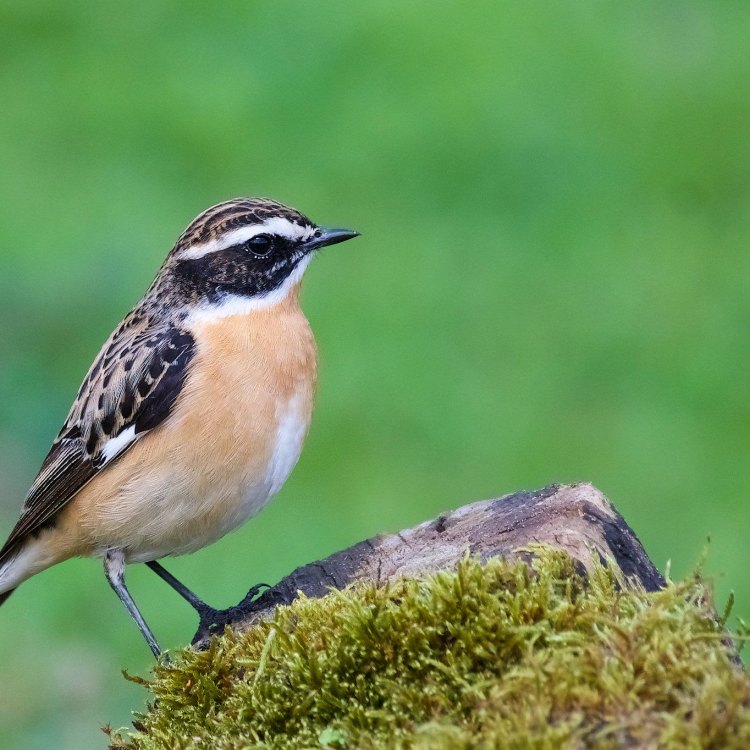
The Whinchat: A Hidden Gem of the Countryside
Disclaimer: The content provided is for informational purposes only. We cannot guarantee the accuracy of the information on this page 100%. All information provided here may change without prior notice.

